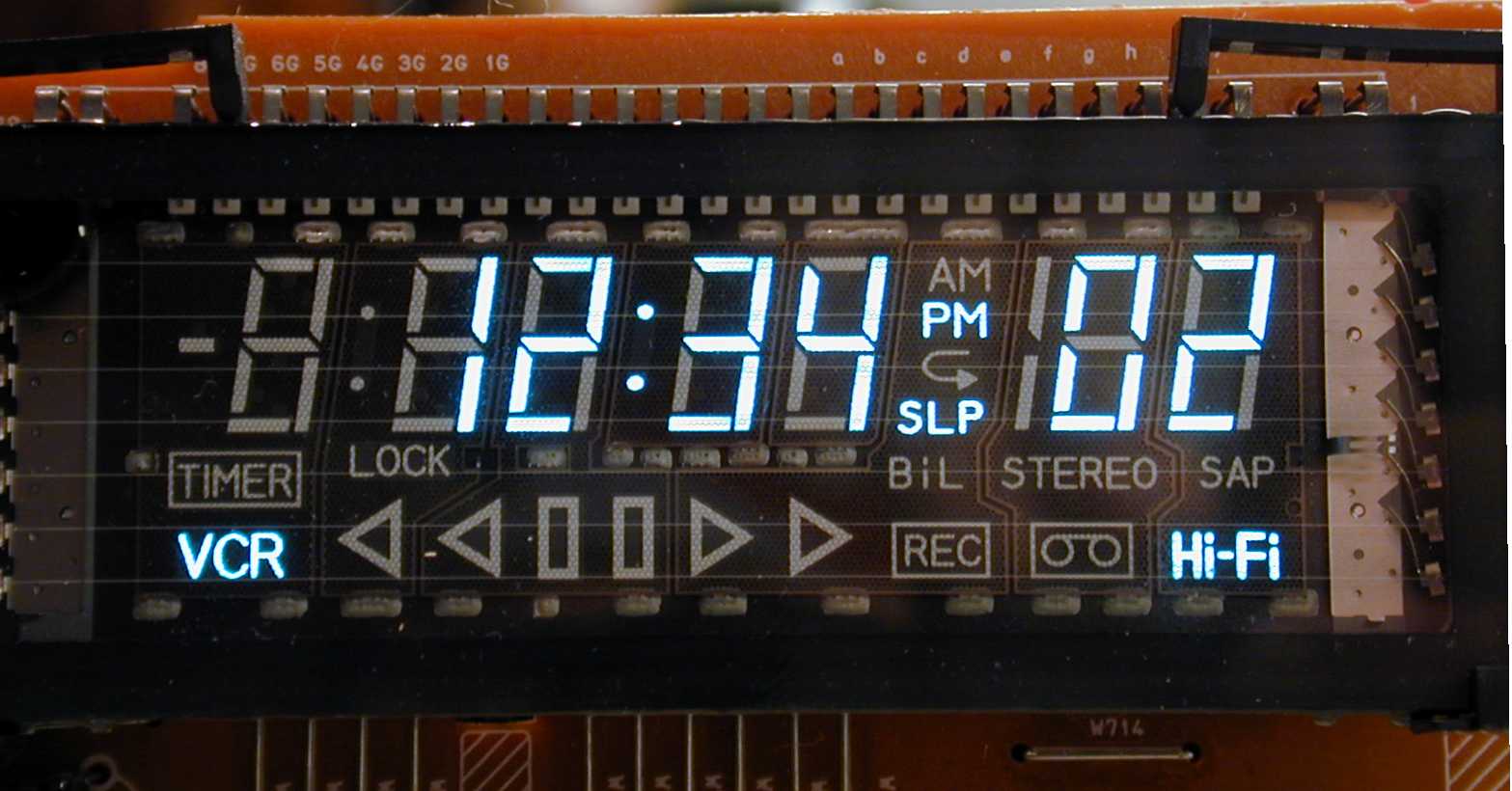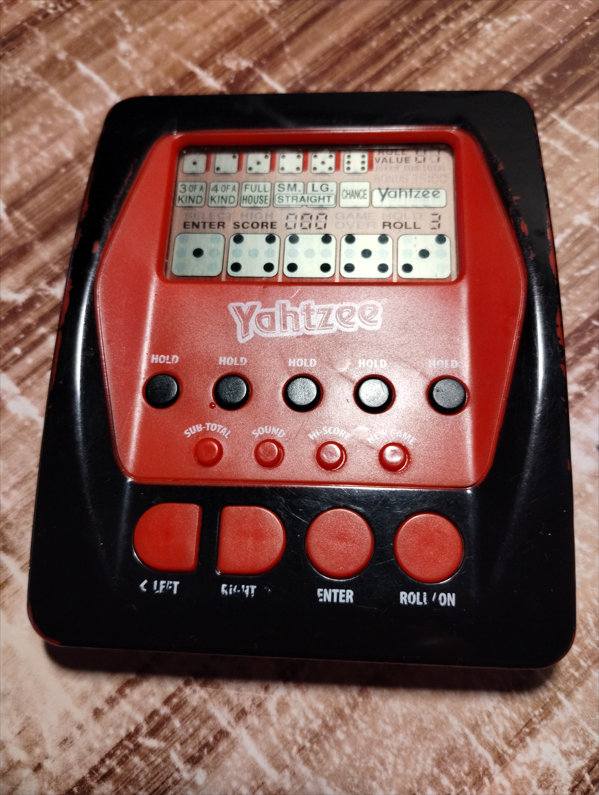|
Dedicated Consoles
A dedicated console is a video game console that is limited to one or more built-in video game or games, and is not equipped for additional games that are distributed via ROM cartridges, discs, downloads or other digital media. Dedicated consoles were popular in the first generation of video game consoles until they were gradually replaced by second-generation video game consoles that use ROM cartridges. History Most of the earliest home video game systems were dedicated consoles, most popularly ''Pong'' and its many imitators. Unlike almost all later consoles, these systems were typically not computers (in which a CPU is running a piece of software), but contained a hardwired game logic. In the late 1970s, ROM cartridge-based systems, beginning with the Fairchild Channel F, had risen to prominence during the second generation of video game consoles due to the success of the Atari 2600, though stand-alone systems such as Coleco's Mini-Arcade series continued to have a sma ... [...More Info...] [...Related Items...] OR: [Wikipedia] [Google] [Baidu] |
Video Game Console
A video game console is an electronic device that Input/output, outputs a video signal or image to display a video game that can typically be played with a game controller. These may be home video game console, home consoles, which are generally placed in a permanent location connected to a television or other display devices and controlled with a separate game controller, or handheld game console, handheld consoles, which include their own display unit and controller functions built into the unit and which can be played anywhere. Hybrid consoles combine elements of both home and handheld consoles. Video game consoles are a specialized form of home computer geared towards video game playing, designed with affordability and accessibility to the general public in mind, but lacking in raw computing power and customization. Simplicity is achieved in part through the use of game cartridges or other simplified methods of distribution, easing the effort of launching a game. However, thi ... [...More Info...] [...Related Items...] OR: [Wikipedia] [Google] [Baidu] |
PlayStation (console)
The (codenamed PSX, abbreviated as PS, and retroactively PS1/PS one) is a home video game console developed and marketed by Sony Computer Entertainment. It was released in Japan on December 3, 1994, followed by North America on September 9, 1995, Europe on September 29, 1995, and other regions following thereafter. As a fifth generation of video game consoles, fifth-generation console, the PlayStation primarily competed with the Nintendo 64 and the Sega Saturn. Sony began developing the PlayStation after a failed venture with Nintendo to create Super NES CD-ROM, a CD-ROM peripheral for the Super Nintendo Entertainment System in the early 1990s. The console was primarily designed by Ken Kutaragi and Sony Computer Entertainment in Japan, while additional development was outsourced in the United Kingdom. An emphasis on 3D computer graphics, 3D polygon graphics was placed at the forefront of the console's design. PlayStation game production was designed to be streamlined and incl ... [...More Info...] [...Related Items...] OR: [Wikipedia] [Google] [Baidu] |
Light-emitting Diode
A light-emitting diode (LED) is a semiconductor device that emits light when current flows through it. Electrons in the semiconductor recombine with electron holes, releasing energy in the form of photons. The color of the light (corresponding to the energy of the photons) is determined by the energy required for electrons to cross the band gap of the semiconductor. White light is obtained by using multiple semiconductors or a layer of light-emitting phosphor on the semiconductor device. Appearing as practical electronic components in 1962, the earliest LEDs emitted low-intensity infrared (IR) light. Infrared LEDs are used in remote-control circuits, such as those used with a wide variety of consumer electronics. The first visible-light LEDs were of low intensity and limited to red. Early LEDs were often used as indicator lamps, replacing small incandescent bulbs, and in seven-segment displays. Later developments produced LEDs available in visible, ultraviolet (U ... [...More Info...] [...Related Items...] OR: [Wikipedia] [Google] [Baidu] |
Liquid-crystal Display
A liquid-crystal display (LCD) is a flat-panel display or other Electro-optic modulator, electronically modulated optical device that uses the light-modulating properties of liquid crystals combined with polarizers to display information. Liquid crystals do not emit light directly but instead use a backlight or Reflector (photography), reflector to produce images in color or Monochrome monitor, monochrome. LCDs are available to display arbitrary images (as in a general-purpose computer display) or fixed images with low information content, which can be displayed or hidden: preset words, digits, and seven-segment displays (as in a digital clock) are all examples of devices with these displays. They use the same basic technology, except that arbitrary images are made from a matrix of small pixels, while other displays have larger elements. LCDs are used in a wide range of applications, including LCD televisions, computer monitors, Dashboard, instrument panels, flight instrument ... [...More Info...] [...Related Items...] OR: [Wikipedia] [Google] [Baidu] |
Vacuum Fluorescent Display
A vacuum fluorescent display (VFD) is a display device once commonly used on consumer electronics equipment such as video cassette recorders, car audio, car radios, and microwave ovens. A VFD operates on the principle of cathodoluminescence, roughly similar to a cathode-ray tube, but operating at much lower voltages. Each tube in a VFD has a phosphor-coated carbon anode that is bombarded by electrons emitted from the thermionic cathode, cathode filament.Chen, J., Cranton, W., & Fihn, M. (Eds.). (2016). Handbook of Visual Display Technology. doi:10.1007/978-3-319-14346-0 page 1610 onwards In fact, each tube in a VFD is a triode vacuum tube because it also has a mesh control grid. Unlike liquid crystal displays (LCDs), a VFD emits very bright light with high contrast and can support display elements of various colors. Standard illumination figures for VFDs are around 640 Candela per square metre, cd/m2 with high-brightness VFDs operating at 4,000 cd/m2, and experimental un ... [...More Info...] [...Related Items...] OR: [Wikipedia] [Google] [Baidu] |
Handheld Game Console
A handheld game console, or simply handheld console, is a small, portable self-contained video game console with a built-in screen, game controls and speakers. Handheld game consoles are smaller than home video game consoles and contain the console, screen, speakers, and controls in one unit, allowing players to carry them and play them at any time or place.Li, Frederick W. B. Computer Games'. . Durham University. Retrieved December 19, 2008. p. 4. In 1976, Mattel introduced the first handheld electronic game with the release of ''Mattel Auto Race, Auto Race''. Later, several companies—including Coleco and Milton Bradley Company, Milton Bradley—made their own single-game, lightweight table-top or handheld electronic game devices. The first commercially successful handheld console was Merlin (console), Merlin from 1978, which sold more than 5 million units. The first handheld game console with interchangeable ROM cartridge, cartridges is the Milton Bradley Microvision in 1979 ... [...More Info...] [...Related Items...] OR: [Wikipedia] [Google] [Baidu] |
Mattel Auto Race
''Mattel Electronics Auto Race'' was released in 1976 by Mattel Electronics as the first handheld electronic game to use only solid-state electronics; it has no mechanical elements except the controls and on/off switch. Using hardware designed for calculators and powered by a nine-volt battery, the cars are represented by red LEDs on a playfield which covers only a small portion of the case. The audio consists of beeps. George J. Klose based the game on 1970s racing arcade video games and designed the hardware, with some hardware features added by Mark Lesser who also wrote the 512 bytes of program code. From a top-down perspective, the player controls a car on a three-lane track and moves between them with a switch. Opponent vehicles move toward the player, in an effect similar to vertical scrolling, and the player must avoid them. A second control shifts gears from 1-4, with the speed increasing for each. ''Auto Race'' was followed by other successful handheld sports game ... [...More Info...] [...Related Items...] OR: [Wikipedia] [Google] [Baidu] |
Survivor
Survivor(s) may refer to: * one who survives Arts, entertainment and media Fictional entities * Survivors, characters in the 1997 ''KKnD'' video-game series * ''The Survivors'', or the ''New Survivors Foundation'', a fictional cult from Robert Muchamore's a 2006 novel ''Divine Madness'' Films * ''Survivor'' (1987 film), a film written by Bima Stagg * ''Survivor'' (2008 film), a film featuring Cyril Nri * ''Survivor'' (2014 film), a film featuring Danielle Chuchran and Kevin Sorbo * ''Survivor'' (film), a 2015 British spy-thriller starring Milla Jovovich and Pierce Brosnan * ''Survivors'' (2015 film), a British horror * ''Survivors'' (2018 film), a Sierra Leonean documentary * ''Survivors'' (2022 film), a Nigerian comedy * ''The Survivors'' (1983 film) * ''The Survivor'' (2016 film), a short about the 2014 APS Massacre Games * ''Survivor'' (1982 video game), a 1982 shooter game * ''Survivor'' (1987 video game), a 1987 8-bit action game * ''Survivor'' (2001 video game) ... [...More Info...] [...Related Items...] OR: [Wikipedia] [Google] [Baidu] |
Dance Dance Revolution X
''Dance Dance Revolution X'' is a music video game developed by Konami. A part of the ''Dance Dance Revolution'' series, it was announced in 2008 for Japan and on May 15, 2008, for the North American PlayStation 2. The Arcade game, arcade version was announced on July 7, 2008, July 9, 2008 in Europe, and July 10, 2008, for North America. Released to celebrate the 10th anniversary of ''Dance Dance Revolution'', ''DDR X'' sports an improved interface, new music, and new modes of play. The arcade release featured an overhauled (second generation) Arcade cabinet, cabinet design with a widescreen display, ''e-Amusement'' and USB access, and an improved sound system. Despite such new design of its arcade cabinet, upgrade kit to change the edition of ''DDR'' on its first generation arcade cabinet from ''SuperNOVA2'' (or earlier) to ''X'' is also available. The PlayStation 2 release has link ability with the arcade machine, multi-player support over LAN, and other improved and returning fe ... [...More Info...] [...Related Items...] OR: [Wikipedia] [Google] [Baidu] |
Electronic Game
An electronic game is a game that uses electronics to create an interactive system with which a player can play. Video games are the most common form today, and for this reason the two terms are often used interchangeably. There are other common forms of electronic games, including handheld electronic games, standalone arcade game systems (e.g. electro-mechanical games, pinball, slot machines), and exclusively non-visual products (e.g. audio games). Arcade games Arcade video games Electronic video arcade games make extensive use of solid state electronics and integrated circuits. In the past coin-operated arcade video games generally used custom per-game hardware often with multiple CPUs, highly specialized sound and graphics chips and/or boards, and the latest in computer graphics display technology. Recent arcade game hardware is often based on modified video game console hardware or high end pc components. Arcade games may feature specialized ambiance or control acc ... [...More Info...] [...Related Items...] OR: [Wikipedia] [Google] [Baidu] |
Philips Tele-Game Series
The Philips Tele-Game series is a series of six Dedicated console, dedicated First generation of video game consoles, first-generation home video game consoles manufactured, released and marketed between 1975 and 1978 by Dutch company Philips. All Philips Tele-Game consoles have the contraction "ES" which stands for "elektronisches Spiel" (German for "electronic game"). The systems are named differently depending on the country (''Tele-Spiel'' in Germany, ''Tele-Game'' in the United Kingdom, ''Tele-Peli'' in Finland, and ''Tele-Spel'' in the Netherlands). In all countries, the name means ''tele game''. The Philips Tele-Game consoles were some of the first European video game consoles ever to be released. Models ES 2201 The Philips Tele-Game ES 2201 was the first console of the Philips Tele-Game series and was sold from late 1975 to 1976 for 150 Deutsche Mark (DM) (converted 61 Euro) or 400 Franc. The score is not displayed on screen, hence there are two sliders for the score ... [...More Info...] [...Related Items...] OR: [Wikipedia] [Google] [Baidu] |







